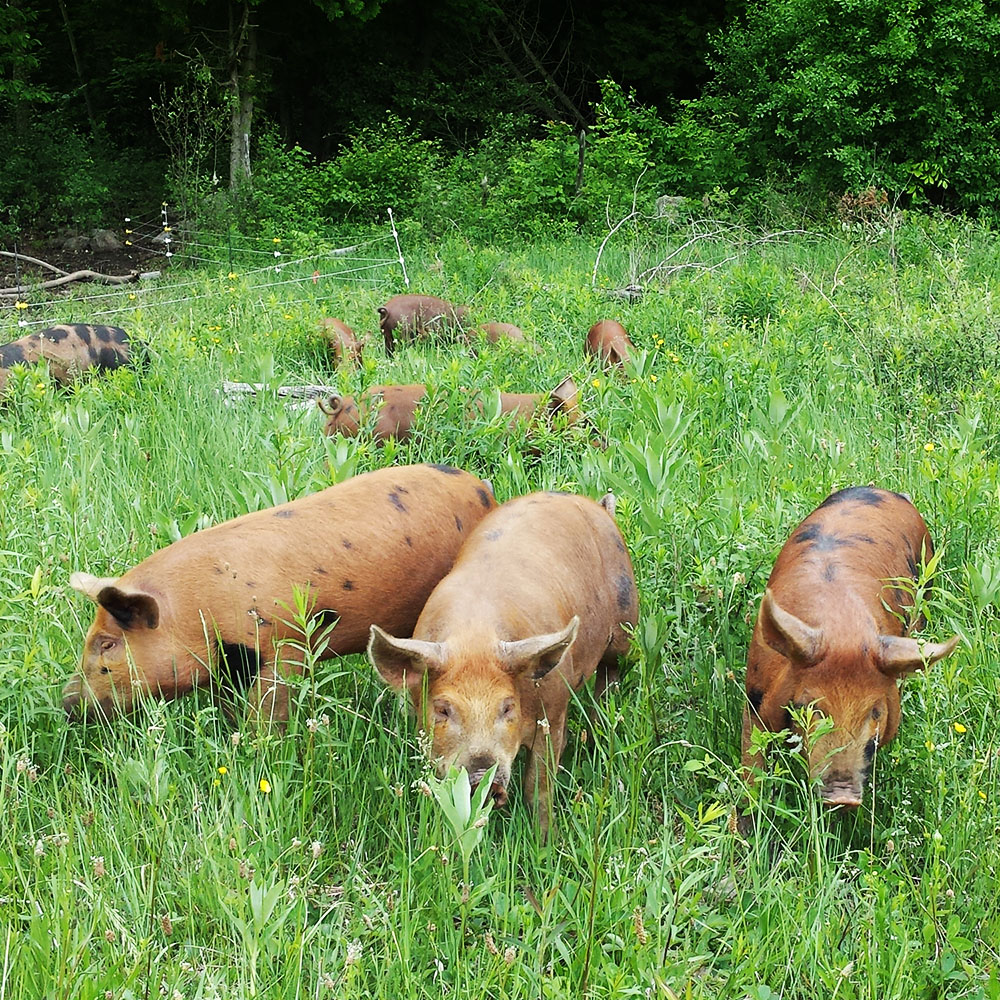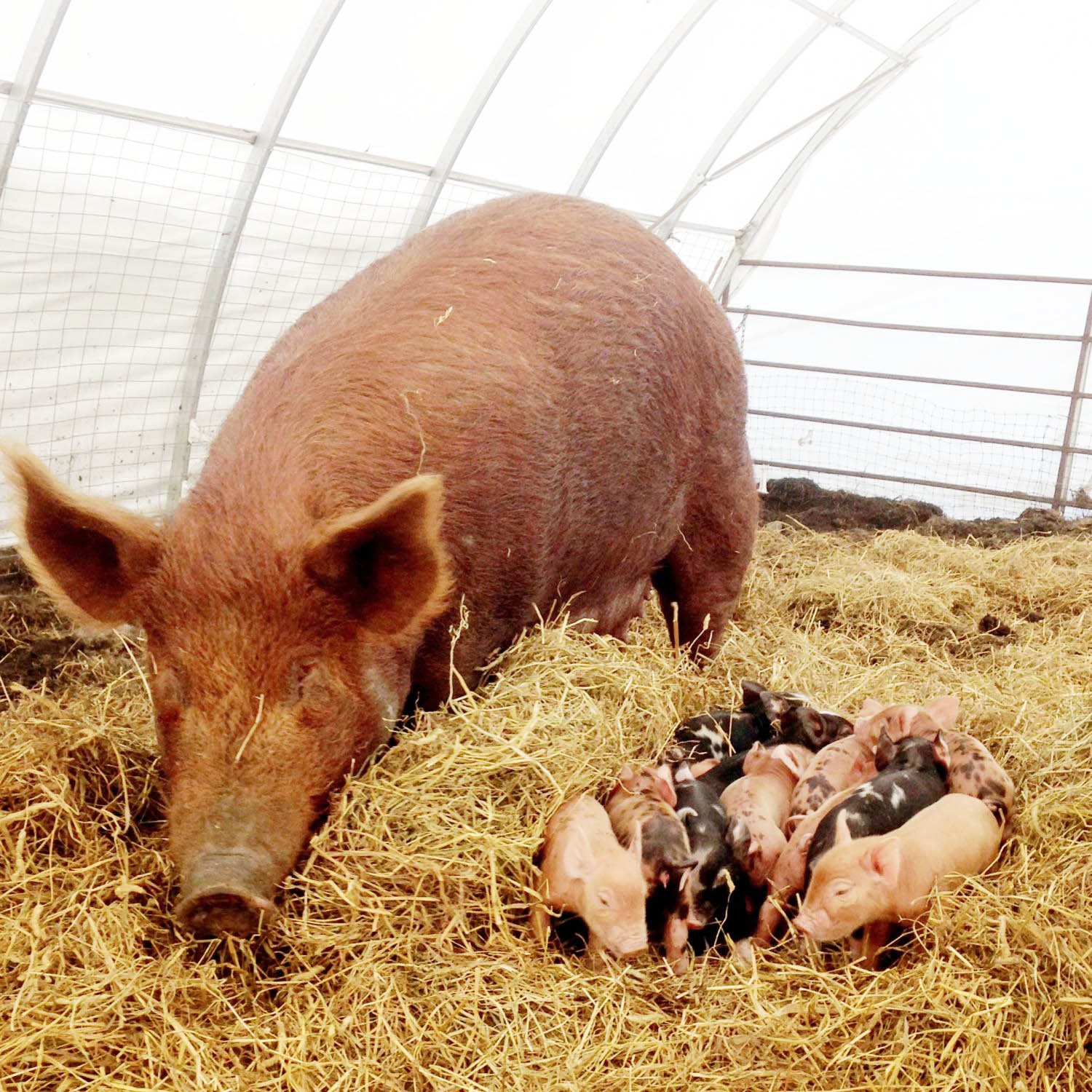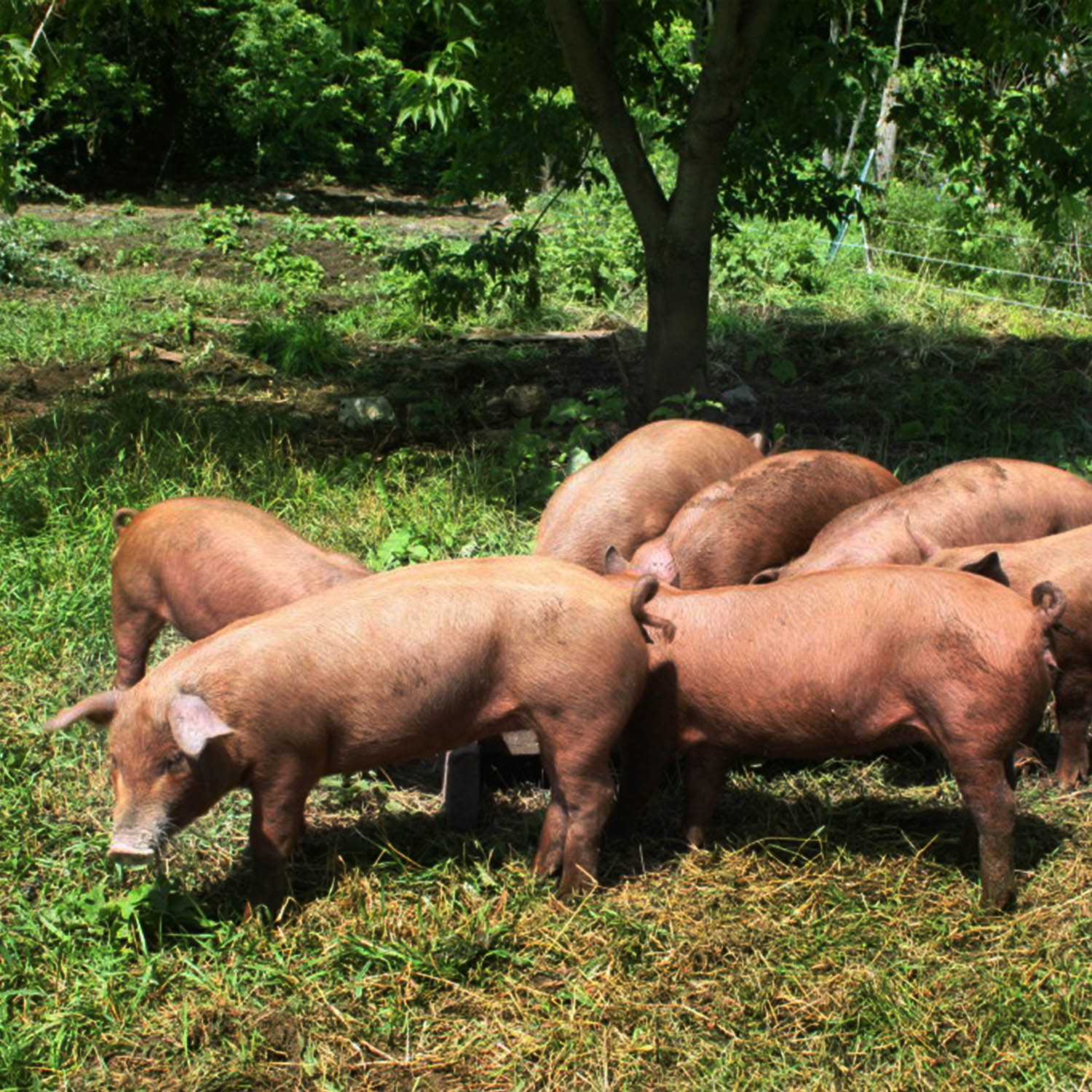Certified Organic Pastured Pork
All ecosystems involve complex webs of animals, plants, and many other forms of life. Our farm is no different, and our animals are an important part of the ecological balance we try to nurture here. All of our animals live out their lives on pasture, using a permaculture-inspired rotational grazing system and are fed with organic grains.
Below you’ll find information about our different pork boxes and how we came to have Certified Organic Pork at la Ferme coop Aux Champs qui Chantent! Our boxes aren’t always available for delivery right after you place an order, but we recommand you order in advance to reserve your box because we sell out quickly! The boxes are delivered in Spring and Fall.
Meat orders for 2019 are now open!
RESERVE HERE >
Certified Organic Pork – 10 lb Standard Box $130

2 lbs of ground pork (approx 2 packages)
2 lbs of pork chops (approx 4 packages, 2 chops per package)
2 lbs of ribs and/or hocks (1 or 2 packages)
1.5 lbs of bacon (approx 3 packages)
1.5 lbs of sausages (fine herbs, mild Italian, maple breakfast, approx 3 packages of 3)
1 lb small ham (1 package)
Certified Organic Pork – 10 lb Sausage Box $135
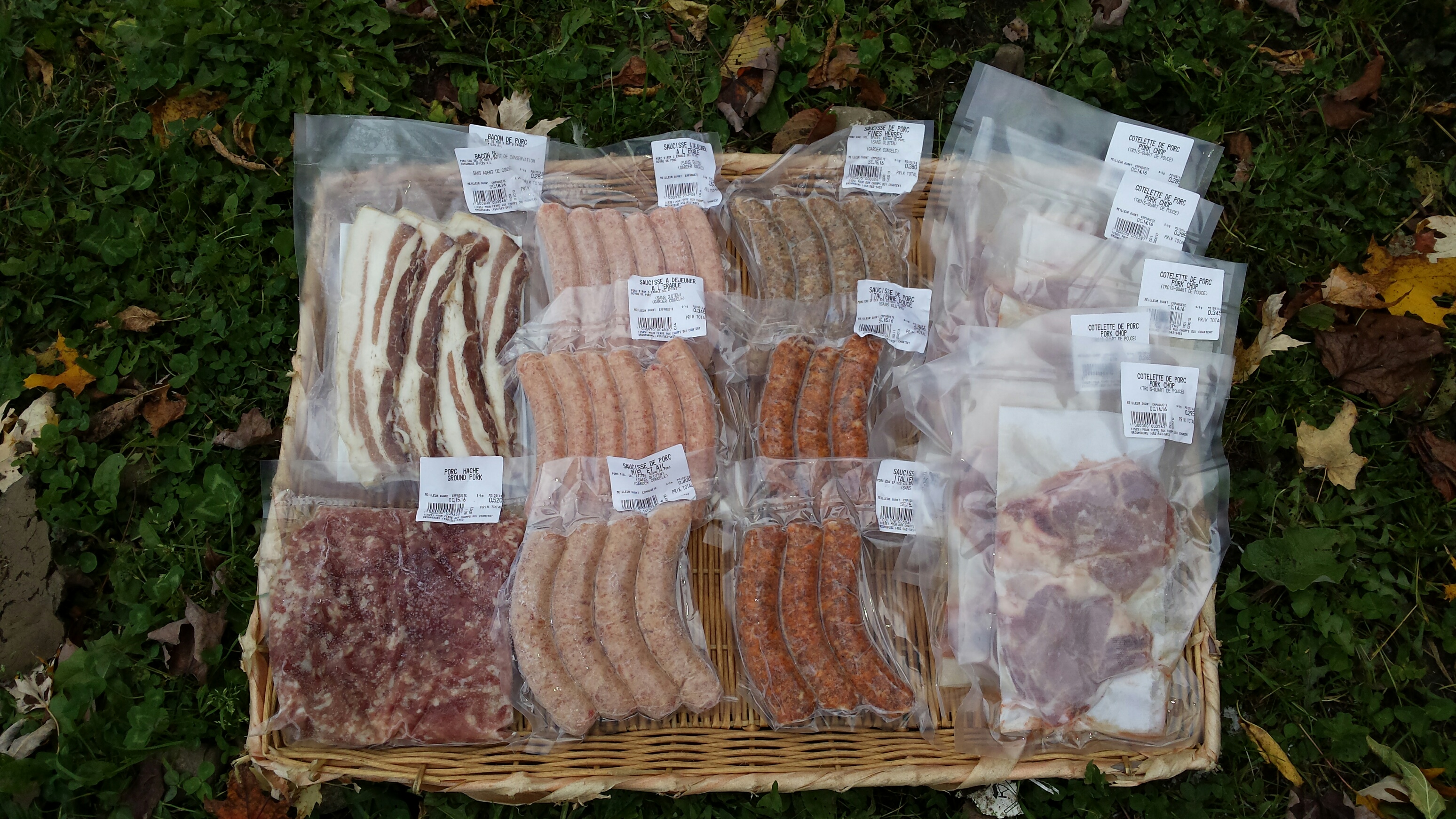
1 lbs of ground pork (approx 1 packages)
2 lbs of pork chops (approx 4 packages, 2 chops per package)
2 lbs of ribs and/or hocks (1 or 2 packages)
1 lbs of bacon (approx 3 packages)
4 lbs of sausages (fine herbs, mild Italian, maple breakfast approx 3 packages of 3)
Certified Organic Pork – 10 lb Authentic Box $120
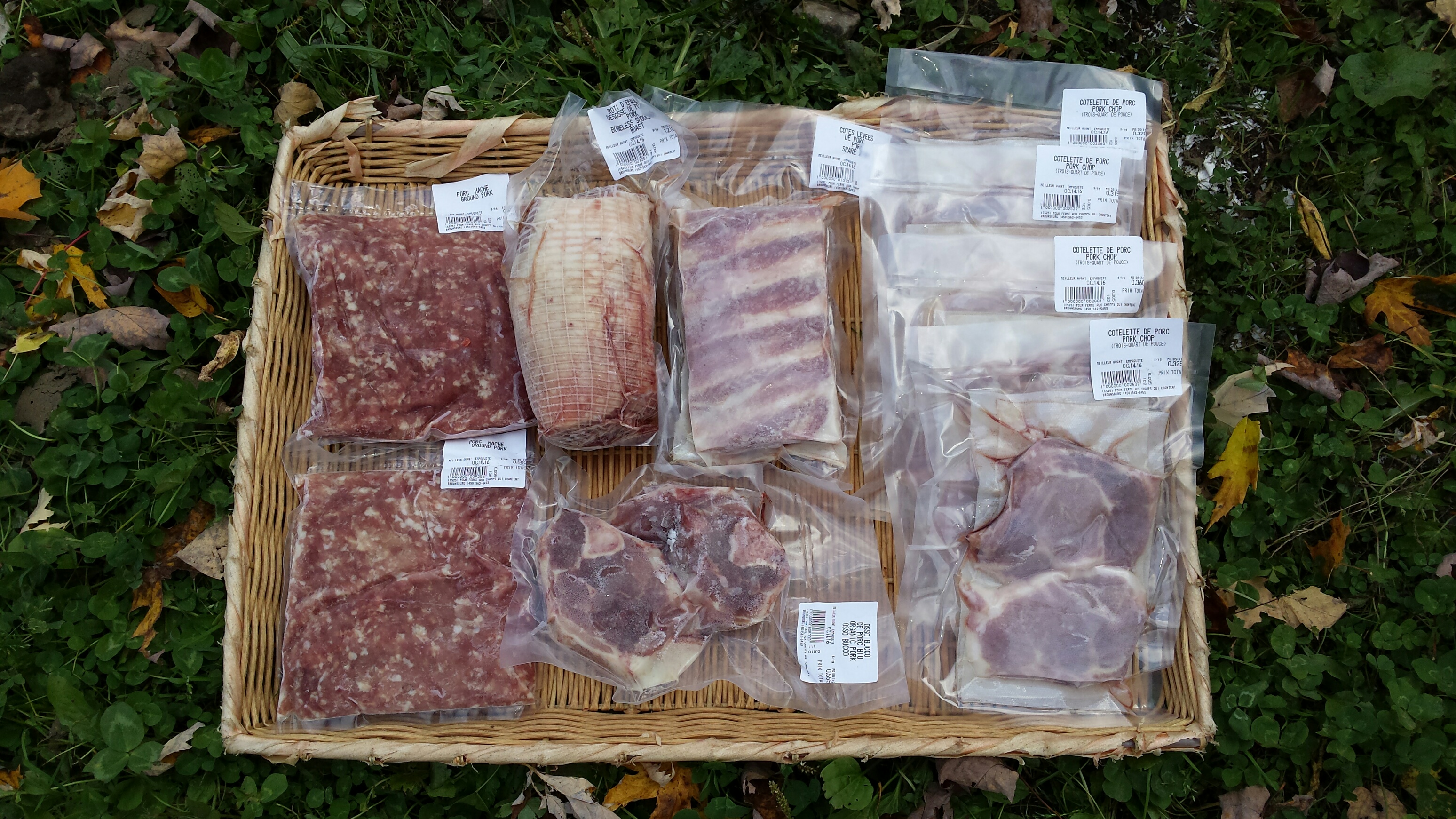
(No transformed meat)
2 lbs of ground pork (approx 2 packages)
3 lbs of roasts and filet mignon
2 lbs of hocks and ribs
3 lbs pork chops (approx 6 packages, 2 chops per package)
About our pigs
We are very proud of our pigs here on the farm and I’m excited to explain why. First, you will plainly see if you come visit the farm, they are happy. We keep them outside on pasture and forest, they are fed organic grains sourced locally when possible, and they are even provided a mud bath. We give them lots of space and when they have finished turning up the soil and eating everything we move them to a new spot so that they always have fresh grass to eat. They are friendly, and sometime they even let us pet them and when they are really into it they will lie down on their side and we can scratch there bellies.
The breed of pig is a cross between Tamworth mother, a species that is more and more rare and considered endangered and Berkshire father. They are originally from Tamworth in the United Kingdom and were first introduced to North America in 1882 to Illinois. They are among the last European species that have least amount of interbreeding with non-European breeds and therefor they are the breed of pig that most closely resembles the wild pigs found in the European forests. They have unfortunately been abandoned in recent years do to industrialized agriculture and the disappearance of small family farms. The Tamworth sows have litters smaller then commercial breeds of pigs, making them less attractive in the eyes of the pork industry. But for those who want to keep their pigs outside the Tamworth pigs are ideal. They are adapted for living outside because they have dark skin and are hairy, unlike the pink pigs we are familiar with, which protects them from the sun. There meat is delicious and has less fat compared to commercial pork.
By Consuming a rare species of pork like Tamworth, you are encouraging their continual breeding and conservation. Without the breeding and consumption of this rare species, this line might disappear to make way for only breeds genetically selected for the standard of the hog industry, where the animals are kept indoors on concrete and in small enclosures. Encouraging breeding of rare species also allows for there to be increasing diversity in our genetic heritage.
